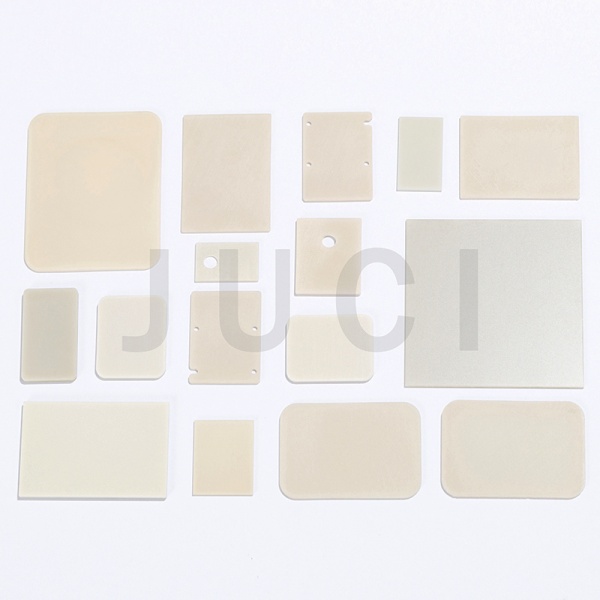



The 5G and AI computing revolution is confronting a core contradiction in optical modules: heat dissipation versus high-frequency transmission. When 1.6T optical modules overheat, causing a potential 30% drop in computing power, aluminum nitride (AlN) ceramics emerge as a critical solution with their exceptional properties.

I. Material Breakthrough: From "Overheating" to "Cool Operation"
AlN ceramics boast a thermal conductivity of up to 170 W/(m·K), approximately eight times that of traditional alumina. This enables limiting the temperature rise of 1.6T optical module chips to within 5°C even under full load. Utilizing a "multilayer co-firing + thin-film wiring" process, it achieves surface line widths as fine as 20μm, reducing signal loss by over 50% in the 100GHz frequency band compared to conventional thick-film processes. Furthermore, it supports 50μm pitch gold wire bonding, perfectly meeting high-density packaging requirements.

Compared to traditional materials, AlN ceramics offer significant comprehensive advantages: superior thermal conductivity to alumina, safer and non-toxic compared to beryllium oxide (BeO), and better suitability for high-frequency transmission than silicon nitride. This makes AlN a key enabler for the miniaturization and enhanced performance of communication equipment.
II. Industrialization: Driven by Policy and Technology
Supported by China's "14th Five-Year Plan" for New Materials Development, the domestic AlN market is projected to reach ¥12 billion by 2025 and exceed ¥20 billion by 2030.
Technological breakthroughs are enabling mass production. Batch shipments of AlN multilayer thin-thick film technology have been achieved, with Physical Vapor Deposition (PVD) and other advanced manufacturing techniques reaching yields over 90%. Consequently, the unit cost of high-performance AlN materials has dropped by 40% compared to five years ago. In practical AI data center applications, 400G/800G optical modules equipped with AlN substrates maintain stable operation even in non-cooled environments, providing crucial material support for the evolution from 800G to 1.6T.

III. Reshaping the Industry: From Material Breakthrough to Ecosystem Transformation
AlN ceramics are altering the competitive landscape, aiding Chinese companies in achieving breakthroughs in cutting-edge areas like 1.6T. Its applications are expanding beyond communications into new energy vehicles, aerospace, and more. Annual demand from the new energy vehicle sector alone is forecasted to surpass 1 million tons by 2030.
This material innovation is fostering new design philosophies. With heat dissipation less of a constraint, optical modules using AlN substrates can achieve 30% higher power density within the same volume, potentially reducing data center footprint by nearly a quarter.
As 5G deployment accelerates and 6G R&D progresses, the strategic importance of AlN ceramics becomes increasingly evident. Each 1°C improvement in cooling efficiency can translate into millions of additional computing units supported by communication equipment. Once confined to laboratories, this material is now reshaping the global high-performance ceramics industry with an 18% CAGR.
About Xiamen Juci Technology Co., LTD
Juci provides high-quality AlN ceramic substrates, structural parts, and heat sinks. These products are vital solutions for thermal management challenges in cutting-edge industries such as optical modules, 5G communication, AI,new energy vehicles, and high-power LED packaging.
Contact:
Xiamen Juci Technology Co., Ltd.
Phone: +86 592 7080230
Email: miki_huang@chinajuci.com
Website: www.jucialnglobal.com